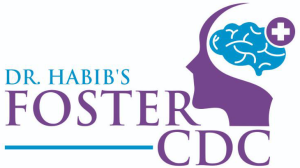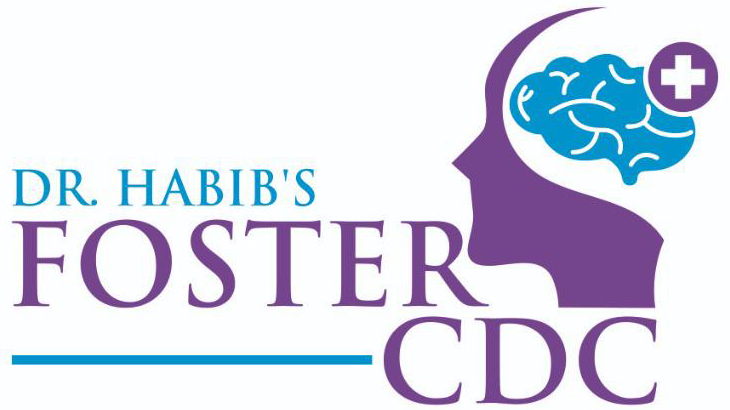Muscular Dystrophy Specialist in Hyderabad explains causes and types of muscular dystrophies in children.
Muscles help in providing strength, agility, control and coordination. Therefore, as long as muscles are healthy, they offer strength and endurance. Muscular dystrophy is a spectrum of disorders or a group of inherited diseases that damage muscles progressively. It causes weakness, loss of muscle mass and muscles’ strength.
Voluntary muscles or the muscles that control movement are mostly affected. Therefore, in some forms of muscular dystrophy, heart and other organs are also affected. Gene mutations disrupt the normal production of proteins needed to form healthy muscles. These abnormal gene mutations cause muscular dystrophy.
Muscular dystrophy symptoms
Early signs of muscular dystrophy
- Stiffness and pain in the muscles
- Difficulty sitting or standing up
- Walking on toes
- A waddling gait
- Running and jumping difficulties
- Frequent falls
- Learning disabilities – late speech development and learning difficulties
With time, the disease progresses and eventually cause the following symptoms:
- The walking difficulty becomes worse.
- The progressive loss of muscles and tendons further limit movement.
- The curved spine may result due to extreme muscles weakness; and, the inability of the muscles to support spinal structure.
- Loss of muscles strength and power may cause breathing issues that could possibly lead to assisted breathing intervention.
- Cardiac or heart issues can develop due to weakened muscles of the heart.
- Swallowing difficulties may develop due to weak muscles.
Muscular Dystrophy Causes
Abnormal mutations or genetic mutations are responsible for muscular dystrophy. These mutations occur on X chromosomes. Therefore, Different types of muscular dystrophy are due to different set of mutations. However, all types of mutations in some or the other way disrupt the normal production of dystrophin protein – which is essential for building and repairing muscles.
Types of Muscular dystrophy
Different types of muscular dystrophy onset at different ages in children and adults. However, symptoms associated with the most common one manifest mostly in childhood. On the other hand, the symptoms associated with other types of disorders don’t appear until adulthood.
Myotonic or Steinert’s Disease (MMD)
This type of muscular dystrophy can affect men and women from early childhood to adulthood. It is one of the most common types of muscular dystrophy. It is also known as Steinert’s Disease or MMD. Myotonia means stiffening of muscles after use or prolonged spasm. In some rare instances, it may appear in new-borns. Myotonia, in addition to causing muscle weakness, also affects eyes, gastrointestinal tract, heart, nervous system and hormone-producing glands. The disease becomes severe in cold temperatures.
Congenital
This type of disorder is present at birth. The progression of the disease is slow and it affects both males and females. It is common both in boys and girls with some forms progressing slowly and others moving fast resulting in severe impairment.
Myosin-deficient congenital muscular dystrophy
Congenital muscular dystrophy with myosin deficiency and Fukuyama have been identified as the two forms of the disorder. In this type of disorder, the affected child exhibits muscle weakness and problems with muscle contractions during the first few months of their life. The other symptoms include shrinking or shortening of muscles with early and severe joint problems. Seizures and brain abnormalities in some children can be attributed to Fukuyama congenital muscular dystrophy.
Duchenne muscular dystrophy
This type of disease is very common in children. The symptoms manifest between the second and third year of their life. The disease progressively hinders the movement of the affected child as he or she ends up being wheelchair-bound by 12 years. Children affected by Duchenne muscular dystrophy die in their early to mid-twenties due to respiratory failure. In Duchenne muscular dystrophy, dystrophin is almost totally absent.
Becker muscular dystrophy
In this type of disease, the symptoms are similar to Duchenne but manifest later and the progression of the disease is a bit slower. Death usually occurs in mid-forties. In Becker muscular dystrophy, there is a reduction in the amount or size of the dystrophin protein.
Limb-girdle
This type of disorder onset during the early or late childhood or teenage years – and, in the initial stages affects the shoulder and hip muscles. Children having this disorder have difficulty raising the shoulder and the front part of their foot. stumbling or missing a step and falling down is a common problem in children affected by this condition.
Facioscapulohumeral (FSHD)
This type of disorder onset during any stage or age, but most often appear during the teenage years. Shoulder and facial muscles show weakness – owing to which the children with this type of muscular dystrophy may keep their eyes slightly open during sleep as they find difficulty in closing their eyes completely. In addition, when a child having this problem raises their arms, their shoulder blades come out like wings.
Oculopharyngeal
Eyes, eyelids, face and throat are affected – and the next in line are shoulder and pelvis. Oculopharyngeal means eye and throat. This type of muscular dystrophy is common in men and women between the ages of 40 and 70 years. The onset of the disease is mostly seen in both men and women in their 40s, 50s, and 60s. As usual, the progression of the disease is slow resulting in severe weakness in facial muscles involving eyes, eyelids, and throat. The other symptoms may include swallowing difficulty followed by shoulder and pelvic muscles’ weakness in the later stages. Choking and recurrent pneumonia may occur.
Distal Muscular dystrophy
This is the less severe type of muscular dystrophy which progresses very slowly affecting fewer muscles than other types of muscular dystrophy. Most adult men and women are affected by this condition. Distal means the muscles that are farthest from the centre – such as those of feet, lower legs, hands and forearms are affected causing weakness and wasting.
What kind of doctor diagnosis muscular dystrophy?
A child neurologist who specializes in the diagnosis and treatment of muscular dystrophy (muscular dystrophy specialist in Hyderabad) diagnoses muscular dystrophy.
How is muscular dystrophy diagnosed?
When you visit a child neurologist after noticing the signs and symptoms of muscular dystrophy in your child, the doctor will examine the child and then take the child’s medical and family history – and then will ask a few questions regarding the symptoms.
In addition, the doctor may order some tests to determine the type of muscular dystrophy involved in causing the problems that the child has – in addition to, ruling out other conditions that could cause such symptoms.
Enzyme assay
The blood test that measures serum creatine kinase (CK) may be ordered to know the cause of muscles damage. Creatine kinase is released when muscles breakdown. Higher levels of CK in the absence of other indicators of muscle damage could indicate muscular dystrophy.
Genetic testing for muscular dystrophy
Changes in the gene sequence due to abnormal mutations can be screened as genetic mutations are known to cause muscular dystrophy. It is helpful in Congenital Muscular Dystrophy Diagnosis. A child neurologist may order a blood test to detect DNA for gene mutations or defects.
Biopsy
In this type of technique, your doctor surgically removes a small portion of the affected muscle and then observe it under the microscope to analyse the cells microscopically and to determine the abnormal changes in the morphology and appearance of the cell. Any muscle cell abnormality – changes in appearance and morphology with low levels of dystrophin protein can help in getting the tell-tale signs of muscular dystrophy.
Heart monitoring
If the doctor suspects abnormalities in the heart due to muscular dystrophy, he or she may order electrocardiography and echocardiograms – which will help in detecting abnormalities in the musculature of the heart. Heart monitoring and testing are particularly helpful in the diagnosis of myotonic muscular dystrophy.
Lung Testing and monitoring
Lung function test can help in detecting the involvement of lungs.
Electromyography
This test may be ordered to detect the electrical activity of muscles. In this test, a needle is placed into the muscle to measure electrical activity. Abnormalities in the electrical activity of the muscle indicate muscle disease.
Muscular dystrophy specialist in Hyderabad
Successful treatment of muscular dystrophy – is it possible?
Currently, there is no way or no therapy to cure muscular dystrophy permanently. Furthermore, there is no possibility of either preventing or reversing muscular dystrophy, but there is a possibility of improving a person’s quality of life and delaying the progression of symptoms. To ensure this, there are different types of physical therapies and drug treatments. Medications and various therapies help slow the progression of the disease and keep the patient mobile for the longest possible time.
For further queries, appointment and consultation, contact muscular dystrophy specialist in Hyderabad.
Dr Habib Pathan
Senior Consultant Paediatric Neurologist
Muscular dystrophy Specialist in Hyderabad
Specializes in the treatment of muscular dystrophy in infants and children


